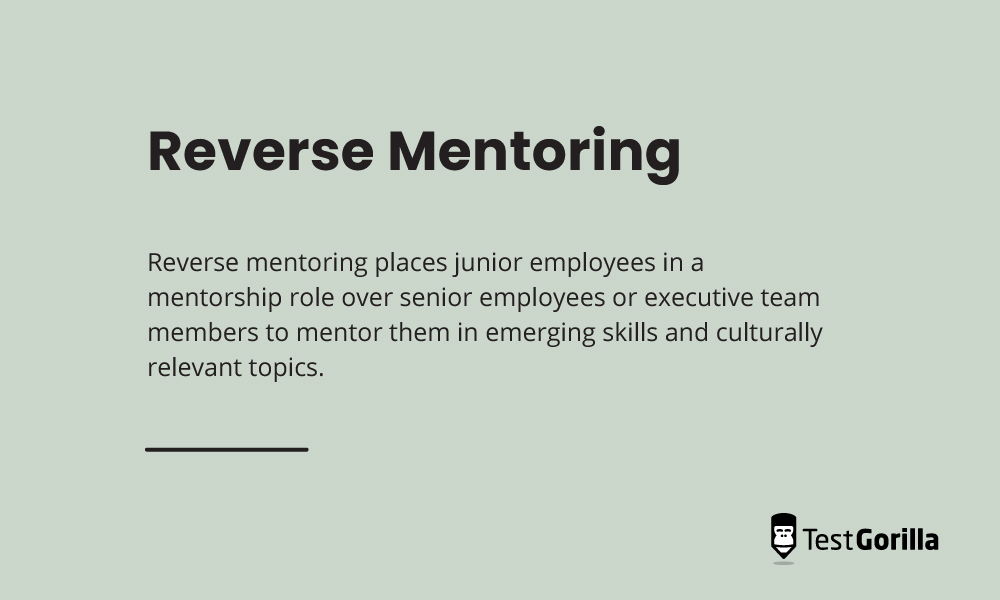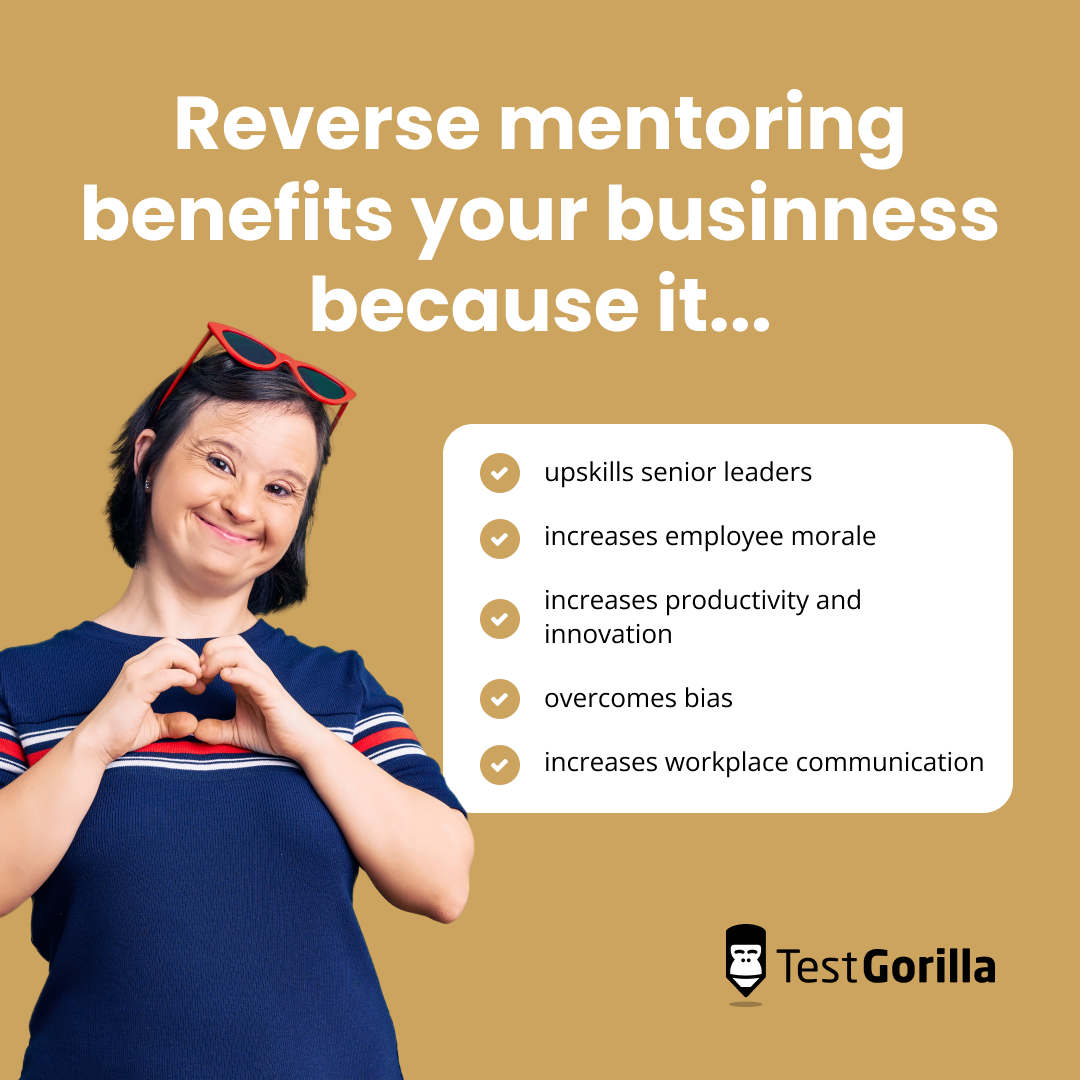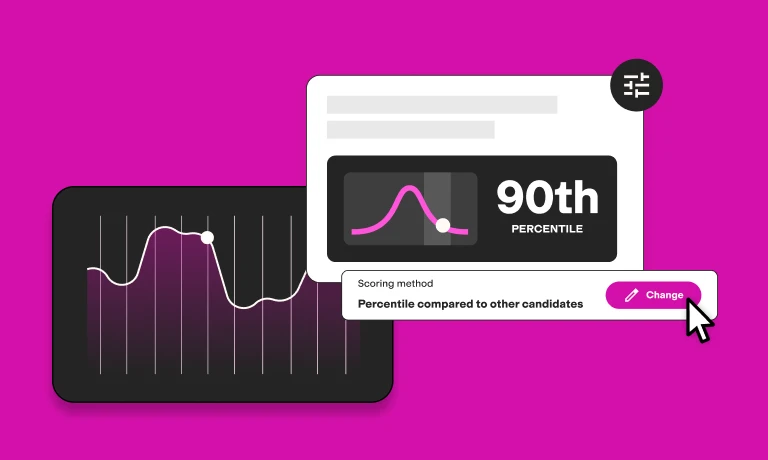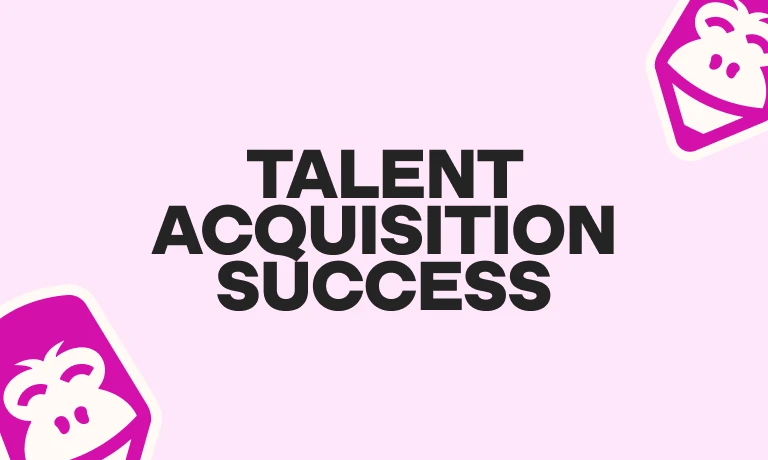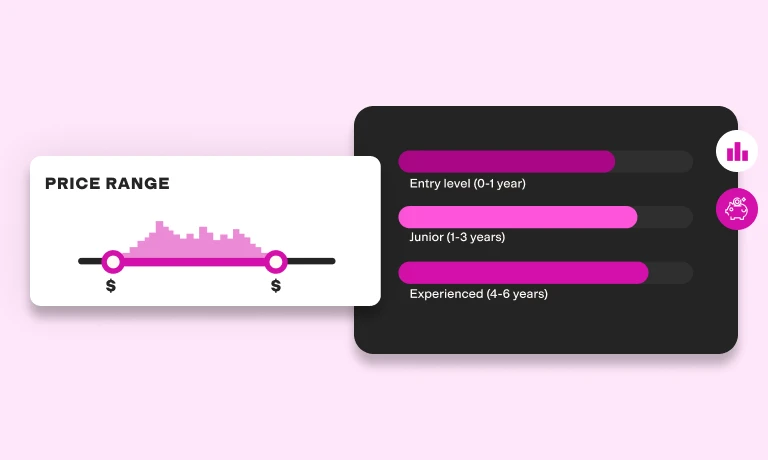How reverse mentoring empowers employees and improves leadership
Skills-based hiring helps you locate and hire skilled employees, but it also finds talent that can discover and develop new competencies.
So, what’s the next step? That’s where mentoring comes in.
Mentoring is an excellent tool for developing and retaining your young talent. More than three-quarters of workers and professionals think mentors are important, but only 37% have one.[1]
But traditional mentorship programs can have hierarchical structures that are rife with bias and leave valuable skills development opportunities on the table.
What about reverse mentoring?
This employee development technique is rising in skills-based organizations that flip the traditional mentorship model on its head: Less-experienced employees are educating, developing, and upskilling their senior leaders.
The results are overwhelmingly encouraging, with workers feeling empowered and senior leaders acquiring valuable insight and skills development.
This guide explores how reverse mentoring benefits low-level employees, senior leaders, and organizations as well as how skills-based organizations are leading the charge.
Table of contents
What is reverse mentoring?
To put it simply, reverse mentoring is the opposite of traditional mentoring.
Reverse mentoring places junior employees in a mentorship role over senior employees or executive team members to mentor them in emerging skills and culturally relevant topics.
This strategy moves away from the old-school model of the wise, older employee taking the newcomer under their wing.
Reverse mentoring connects people of different backgrounds as well. For example, you can pair a junior skilled through alternative routes (STAR) employee with a senior employer with a university degree.
Moving beyond the traditional mentoring model addresses concerns of mentorships being elitist or otherwise ill-equipped to support a diverse workforce. With reverse mentoring, workers are empowered and included in your organization’s decision-making.
Supporting junior-level employees in this way reduces turnover. Pershing, a BNY Mellon Company, reported a 96% employee retention rate using reverse mentoring.[2]
Reverse mentoring in skills-based organizations
Retaining talented millennial workers has become increasingly difficult.
With millennial turnover costing the US economy more than $30bn a year, finding creative and effective ways to keep them engaged in your organization is critical.
Organizations that rely on traditional hiring methods like degree and experience requirements are missing out on a larger millennial talent pool that may not meet these requirements but has the skills to succeed in a particular role.
If they hire suitable candidates, they often use traditional top-down mentoring, with senior leaders offering training, career advice, and guidance to junior employees.
Organizations that use skills-based hiring successfully attract and hire skilled, younger talent, but they also know how to mentor effectively. That’s because skills-based hiring and employee development aren’t separate processes – they go hand in hand.
Skills-based organizations implement reverse mentoring, which benefits new talent by:
Upskilling new hires
Building their confidence
Improving overall performance
Growing leadership networks
That’s great for nurturing your millennial workforce, but what about your senior leaders (traditional mentors)?
Skills-based organizations recognize that keeping senior leaders informed of emerging skills, changing demographics, and technological trends is as important as empowering junior workers.
Reverse mentoring benefits senior leaders by:
Upskilling higher-level employees
Eliminating bias
Increasing team engagement
Creating a healthier workplace
Reverse mentoring leverages the potential of your junior workers to upskill and educate your senior leaders and is guaranteed to take your organization to the next level.
The benefits of reverse mentoring for junior employees
Building a skills-based organization is more than eliminating degree inflation and hiring for skills.
It means creating an environment where your junior workers are:
Aware of what their strengths and weaknesses are
Encouraged to experiment and challenge the status quo
Respected and valued for their gender, race, and class diversity
Free to express their unique perspectives to the highest levels of management
Considered more than just new workers, but important partners in decision-making
According to our report, The State of Skills-Based Hiring 2022, organizations that used skills-based hiring saw a 91% increase in workplace diversity, with 72.1% of employees reporting they are happy in their roles.
Reverse mentoring is key to keeping workers learning, advising, and leveraging their unique worldviews.
Let’s dig deeper into the benefits that reverse mentoring offers junior employees.
1. Learn new skills
Upskilling enables employees to learn new skills that add to their existing ones and give them new responsibilities.
For example, if you hire a sales representative, your onboarding process can involve teaching them more about the product, what services you offer, and identifying user needs.
Upskilling can take learning a step further by training that employee to use popular and emerging social media platforms like TikTok and BeReal, for example, to find leads in different demographics and get the word out.
But what about traditionally senior-level skills like leadership and team management?
Let’s take a look at senior-level skills.
Senior-level skills | How it works |
Management skills | Senior leaders teach junior workers . Junior workers also lead by teaching and evaluating leaders’ technical and soft skills. |
Communication skills | Reverse mentorship builds communication skills for your junior employees because they teach leaders their unique skills and offer feedback on leadership styles. |
Listening skills | Junior employees are used to listening to their managers’ perspectives and feedback. Reverse mentorship teaches your employees a different kind of listening, like understanding senior leaders’ . |
2. Build confidence
If your workers are empowered to speak their minds and demonstrate their unique abilities, they’ll feel more confident in their work.
According to a study by Indeed, 98% of workers say they perform better when they feel confident.[3]
If a senior leader genuinely wants to learn from a junior employee, that employee feels valued and part of the decision-making process.
To build this confidence, you need to have an inclusive organization.
According to a study by Gartner, three-quarters of organizations with diverse and inclusive decision-making teams were going to exceed their financial targets through 2022.
The benefits of diversity in the workplace don’t stop there. Diversity organizations are:
More innovative
Better problem-solvers
More adaptable
More productive
Seen as better employers
Pairing senior-level mentees with mentors from diverse backgrounds encourages these reverse mentors to share their perspectives, worldviews, and cultures.
Reverse mentorship benefits everyone involved: Mentors build confidence, mentees gain unique perspectives and technical skills, the organization becomes more inclusive, and culture competency improves across the board.
3. Improve performance
Reverse mentoring and inclusion directly impact employee performance.
Employees who feel included are three times more likely than other workers to feel excited and engaged.
Employee engagement is more than just feeling happy at work. It’s an emotional commitment to your company’s mission and goals.
Reverse mentoring gives junior workers unique, individualized opportunities to learn high-level skills, which grows their competencies and keeps them invested in individual and organizational success.
What’s more, if your senior leaders value the opinions and expertise of your junior employees, they establish mutual connections where both parties are engaged and want to help the other succeed.
4. Grow senior-level networks
The mutual connections formed between junior workers and senior leaders involved in reverse mentoring can expand junior employees’ networks beyond their peers in their industry.
Networking is an essential tool in skills-based hiring that can help locate top-tier talent, but junior employees can also benefit from networking with their superiors.
Reverse mentoring builds relationships between senior and junior employees who may otherwise communicate and collaborate minimally.
With many professionals finding networking important for career success, reverse mentoring gives workers the benefits of pre-existing relationships with high-level workers, like:
Collaborative and efficient working relationships to advance current and future projects
Using senior leaders as references if they switch career paths or departments
Consulting with senior leaders about their experiences climbing the ladder
The benefits for your business
Reverse mentoring builds the confidence of junior employees and keeps your senior employees agile. But there are plenty of concrete benefits to your organization, such as:
Improving workplace communication: Better communication between your organization’s highest and lowest levels increases productivity by up to 25%.
Leveraging growth potential: Less-experienced workers that show you can upskill them are significant assets to any organization. The more skills your employees can learn, the more your organization grows.
Increasing diversity: Diverse organizations are more profitable, creative, and engaged.
Making a healthy workplace: A positive workplace culture improves your junior employees’ performance, builds their confidence, and values their diversity, boosting productivity and job satisfaction.
Increasing collaboration: Reverse mentoring increases collaboration at your business’s highest and lowest levels. Since a lack of collaboration often worsens productivity, reverse mentoring can fill the gap.
The best insights on HR and recruitment, delivered to your inbox.
Biweekly updates. No spam. Unsubscribe any time.
The benefits of reverse mentoring for senior leaders
It’s clear how a junior employee having increased access to a senior leader can benefit their development.
But what about the other way around? The mentor reversal shines through when this happens.
Businesses and their leadership structures are flooded with ever-changing technology, tools, and perspectives, as well as ideological and demographic shifts. This means staying ahead of technical and soft skills gaps is imperative.
Reverse mentoring enables senior leaders to learn new skills that their junior counterparts have grown up with as digital natives.
It also exposes senior leaders to millennials and Gen Zers, the most diverse generation, to help navigate and eliminate bias and find ways to increase employee engagement.
1. Learn new digital skills
According to data from Salesforce’s Global Digital Skills Index that surveyed 23,000 workers across 19 countries, more than three-quarters of respondents didn’t feel they had the skills to succeed in a digital-first world.
Although managers must have skills beyond the technical, digital space, like leadership and communication skills, younger junior workers need role models to connect with in their industry.
According to Ginnie Carlier, the vice chair of talent for EY Americas, the younger generation needs digital leadership. If they notice that their bosses don’t have these skills, it erodes confidence in how the organization can evolve.
Reverse mentoring gives senior leaders, who tend to be older, a chance to learn from younger employees enabling them to refine existing skills or learn new ones, like digital skills.
This access helps close the digital skills gap: the disconnect between much-needed skills like social media and search engine marketing and traditional skills like project management.
2. Navigate bias
According to Jim Berry, the director of the MBA program at University College London, reverse mentoring gives senior leaders greater intergenerational awareness.
Employers and managers can view certain practices, behaviors, and organizational goals differently because of their previous life experiences.
Those differences can create barriers that lead to traditional bias-prone hiring and management techniques:
Resume requirements: Resume evaluation is biased against those who may have yet to gain specific work experience but have the skills to do the job.
Unstructured interviews: Unstructured interviews bring unconscious bias to the interview table by flowing freely without objective, skills-based metrics.
Education requirements: There is little evidence to suggest that university graduates perform better than non-graduates. Research shows that graduates have lower levels of engagement at work and higher turnover rates.
But bias doesn’t only exist in the hiring stage.
Selective perception, for example, is when a manager unknowingly focuses on only a portion of the available information.
Imagine a manager with a strong interest in finance who calls out an employee’s work because the financial portion is not up to the manager’s standard, even though the rest of the project looks promising.
There’s also similarity bias**,** which occurs when managers prefer workers who are similar to them in appearance, opinions, upbringing, race, education, and interests.
Reverse mentoring overcomes unconscious bias in the hiring process and the workplace because junior and senior-level employees collaborate with the clear intention of educating the mentee and empowering the mentor.
3. Increase employee engagement
If you increase employee engagement, you reduce employee turnover.
You can encourage engaged workers to produce results but should also acknowledge and reward them for those results to make them work harder.
You should also involve them in decision-making and make them feel like a part of your organization’s future. This incentive and others, like catering roles and projects to their interests and skills, show employees that you support them.
Employee engagement also involves asking workers for their opinions and feedback on the company’s direction.
It’s important to note employee engagement begins before the candidate is hired.
Early in the hiring process, skills-based organizations assess whether a candidate has the skills to perform well in the role as well as the right mindset to succeed.
In other words, skills-based hiring assesses the whole candidate.
Skills-based hiring uses multi-measure assessments to identify a range of technical skills but also focuses on aspects that predict employee engagement, like personality fit, and a candidate’s motivations, aspirations, and perspectives.
Reverse mentoring takes this a step further by encouraging workers to show those skills and explore those perspectives in real-time in front of their senior leaders, not as a test but as a way to benefit your business and management team.
Reverse mentoring tells employees: Not only do we value your skills and perspective, but we also need them to succeed as an organization.
That’s more than a morale boost. That’s a partnership.
This partnership makes your managers’ lives easier by improving workflows, communication, workplace communication, and a shared language of skills.
The benefits for your business
Reverse mentoring benefits your business because it:
1. Upskills senior leaders: Reverse mentoring equips your senior leaders with the skills needed to do the job more effectively and gives them opportunities to become more than authority figures. They can become learners again.
2. Increases employee morale: Research shows that 84% of employees say poorly trained managers cause unnecessary stress. Reverse mentoring builds stronger leaders to boost organizational morale.
3. Increases productivity and innovation: Good management increases productivity and innovation. If workers feel that they are working with managers, not for them, they are more engaged in their work, making senior-level responsibilities easier to handle.
4. Overcomes bias: Eliminating bias at the management level creates a healthier, more productive workplace. That’s great for junior employees, but it also makes the jobs of senior leaders a lot easier.
5. Increasing workplace communication: Eliminating hierarchical structures is key to good workplace communication. Reverse mentoring empowers junior workers to give senior leaders the feedback they need to hear to do their jobs more effectively.
How to get started with reverse mentoring
Thinking about getting involved in reverse mentoring?
Remember that reverse mentoring isn’t simply pairing up junior and senior employees and hoping it works out.
Follow these five best practices to learn how to identify your goals, build a successful program, start recruiting, and monitor your reverse mentorship program.
1. Establish your goals for reverse mentoring
Before implementing a reverse mentorship program, ask yourself these questions:
Why am I interested in reverse mentoring? You could be experiencing a talent shortage at the senior level and want to challenge your managers to improve.
What do I hope my senior leaders learn from younger workers? Maybe your current manager is great at assigning tasks but lacks the digital skills to assign them via content management systems or other platforms.
What do I hope my younger or less-experienced employees get out of the program? You could have your eye on an employee you want to promote to a leadership role but want to see how they perform as a reverse mentor first.
Reverse mentoring is a professional development strategy for your junior and senior team members to benefit your business in tangible ways. Establish your goals first to maximize success.
2. Build the program
Now that you know why you’re using reverse mentoring, it’s time to build the program.
Start with the basics:
Who will be in charge? Establish which employee will be managing this program or if that will be your responsibility as the employer.
Who will be participating? Every junior- and senior-level employee is different. It’s important to identify early on which workers will benefit the most from your reverse mentorship program.
How long will the reverse mentorship last? Putting firm start and end dates on your program to effectively monitor progress and keep your reverse mentee and mentor engaged is crucial.
How do employees and leaders sign up? Make the program easy to participate in, with all the information readily accessible for both parties.
How is progress measured? You have your goals. How do you measure them? You can use skills assessments and 360 feedback to measure how much your mentors and mentees have learned.
Answering all these questions helps you build a sturdy reverse mentorship program that ensures the process goes smoothly and you meet everyone’s needs.
3. Start recruiting mentors and mentees
After deciding who can benefit the most from your reverse mentorship program, start recruiting participants and plan how to connect them.
Ask whether they have any concerns, and ensure everyone is free to ask questions before getting started.
Communication is key, as is taking feedback and acting upon it.
4. Stay on top of your reverse mentorship program
Your reverse mentorship program shouldn’t happen on an island.
Although your responsibilities as an employer could prevent you from monitoring every stage of the reverse mentorship program, plan to check in as much as possible with regular meetings and discussions.
You should also be on the lookout for problems, potential pitfalls, and areas for improvement.
Remember: Reverse mentorship involves leadership and the HR department, too.
5. Measure your success
Once your reverse mentorship program ends, measure the results against your previous goals.
Did you accomplish what you wanted? For example, does your manager have better digital skills or an agreed-upon strategy to improve them?
What feedback has your reverse mentor and mentee provided? Maybe your senior leader gained important insight into the benefits of diversity, but your junior employee still doesn’t feel empowered to challenge the status quo.
What have they learned from their experience? Maybe your senior leader learned something they didn’t expect, like how they could do the bulk of their work remotely if they learned the appropriate digital skills.
How can you improve your reverse mentorship program in the future? Ask your mentors and mentees for feedback. Maybe your program was going well initially, but other organizational tasks took priority, and the program floundered. How can you keep the program consistent and integrated into existing workflows?
Don’t be afraid to tweak your process before trying again. Reverse mentoring is a learning process for everyone involved.
Develop better managers and junior employees with reverse mentoring
Traditional mentorship programs rely heavily on hierarchical structures prone to bias and one-sided communication.
Reverse mentorship programs increase employee engagement, improve workplace communication, upskill junior and senior employees, and eliminate bias in your organization.
Empowering your junior employees and including them in organizational decision-making builds their confidence, boosts productivity, and reduces turnover.
Upskilling your senior leaders makes them better managers and brings your organization into the future.
Simultaneously developing both groups increases operational efficiency and innovation, making your organization an exciting and productive workplace.
Want to learn more about locating and retaining future mentors and mentees? Read our guide to the 10 best practices for skills-based hiring in your organization.
Sources
Comaford, Christine. (July 3, 2019). “76% Of People Think Mentors Are Important, But Only 37% Have One”. Forbes. Retrieved May 15, 2023. https://www.forbes.com/sites/christinecomaford/2019/07/03/new-study-76-of-people-think-mentors-are-important-but-only-37-have-one/?sh=73c216224329
Silard Kantor, Julie. (July 6, 2017). “MentoringUP: Millennials Reverse Mentor at Pershing (a BNY Mellon Company)”. HuffPost. Retrieved May 15, 2023. https://tinyurl.com/2p8dfm3e
Lewis, Liz. (January 23, 2020). “Confidence at Work: Why Employers Should Nurture This Soft Skill”. Indeed. Retrieved May 15, 2023. https://www.indeed.com/lead/confidence-at-work
You've scrolled this far
Why not try TestGorilla for free, and see what happens when you put skills first.


